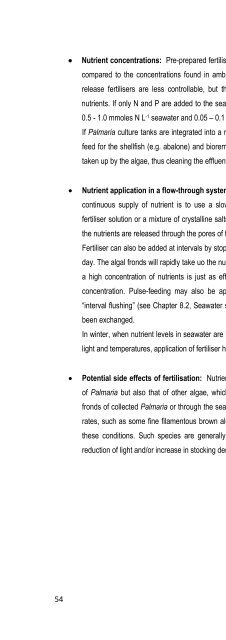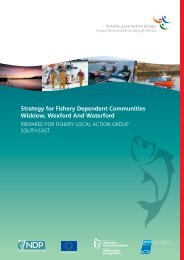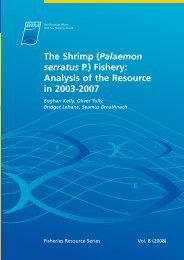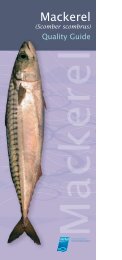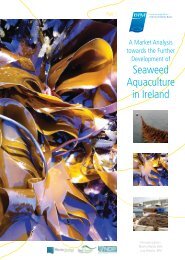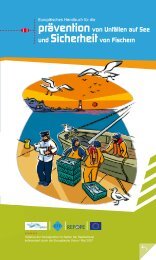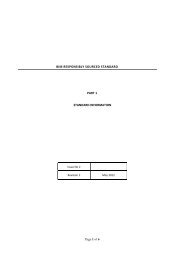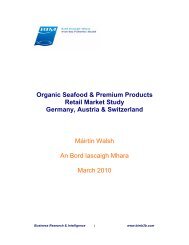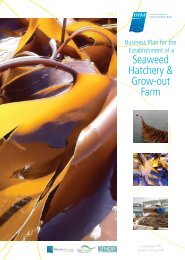Cultivating Palmaria palmata - Bord Iascaigh Mhara
Cultivating Palmaria palmata - Bord Iascaigh Mhara
Cultivating Palmaria palmata - Bord Iascaigh Mhara
Create successful ePaper yourself
Turn your PDF publications into a flip-book with our unique Google optimized e-Paper software.
54<br />
Nutrient concentrations: Pre-prepared fertiliser usually provides very high concentrations of nutrients<br />
compared to the concentrations found in ambient seawater. The concentrations available from slow-<br />
release fertilisers are less controllable, but they provide a low-maintenance, easy-to-use source of<br />
nutrients. If only N and P are added to the seawater, suitable concentrations for enhancing growth are<br />
0.5 - 1.0 mmoles N L -1 seawater and 0.05 – 0.1 mmoles P L -1 seawater (N:P ratio of 10:1).<br />
If <strong>Palmaria</strong> culture tanks are integrated into a re-circulating system with a double purpose of supplying<br />
feed for the shellfish (e.g. abalone) and bioremediation, the nutrients present in the wastewater will be<br />
taken up by the algae, thus cleaning the effluent. The major N source here is ammonium.<br />
Nutrient application in a flow-through system: In a flow-through system the easiest way to provide a<br />
continuous supply of nutrient is to use a slow-release fertiliser. This can be prepared by adding a<br />
fertiliser solution or a mixture of crystalline salts to a porous clay vessel, which is tightly closed so that<br />
the nutrients are released through the pores of the pot when submerged in the tank water.<br />
Fertiliser can also be added at intervals by stopping the water-flow for a period, e.g. for 2-6 hours every<br />
day. The algal fronds will rapidly take uo the nutrients during this period, and such “pulse-feeding” using<br />
a high concentration of nutrients is just as effective as continuous application of fertiliser at a lower<br />
concentration. Pulse-feeding may also be appropriate when seawater is supplied to the tanks by<br />
“interval flushing” (see Chapter 8.2, Seawater supply), adding the nutrients just after the seawater has<br />
been exchanged.<br />
In winter, when nutrient levels in seawater are high and the growth rates of <strong>Palmaria</strong> are limited by low<br />
light and temperatures, application of fertiliser has only a very limited effect.<br />
Potential side effects of fertilisation: Nutrients added to the seawater stimulate not only the growth<br />
of <strong>Palmaria</strong> but also that of other algae, which may be brought into the tanks either attached to the<br />
fronds of collected <strong>Palmaria</strong> or through the seawater supply. Fouling algae with especially rapid growth<br />
rates, such as some fine filamentous brown algae and some green algae, may develop quickly under<br />
these conditions. Such species are generally adapted to higher irradiances than <strong>Palmaria</strong>, so that<br />
reduction of light and/or increase in stocking density can reduce their growth.


